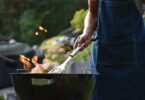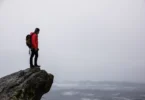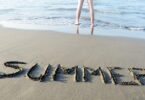When the snow begins to fall, and temperatures drop, some hunters pack it in and wait for spring. However, winter hunting offers some unique challenges and benefits. There are ample hunting opportunities during the winter, ranging from feral pigs and elk to wild turkeys.
1. Deer

Source: unsplash.com
Deer seasons typically begin in September or October and last through January, although this varies from one state to another. Winter deer hunting offers several benefits, including easier tracking of blood spots on the snow, increased visibility, clearer sightlines, and easier carcass transport. Hunting deer is easier in the winter, as they tend to gather around the limited food sources available. During the winter months, consider using elevated hunting blinds like the ones offered at ShadowHunterBlinds.com. When the temperature is below freezing outside, seeking an appropriate vantage point in a traditional tree stand can expose you to the bone-chilling cold. An elevated hunting blind that uses a shelter keeps you and your equipment warm and dry while you wait for the perfect shot.
2. Elk
Several states across the U.S. offer later hunting seasons for wild game, including elk. The winter weather draws elk out of the mountains and into your hunting range. Elk provides hunters with ample meat and antlers. Elkskin is also highly prized for its strength and durability. When it’s warm, elk tend to bed down under deep cover and wait for the weather to cool. But in winter, when the weather turns chilly, they spend more time on their feet grazing. This increase in activity provides more favorable hunting conditions.
Winter also signals the end of the rut, which means you are more likely to find a bull on its own away from the herd. Bulls tend to stay at higher elevations while the cows migrate lower to warmer regions. Look for bulls at the edges of steep snow-covered aspen slopes for your best bet. An adult male elk can weigh as much as 1,100 lb., so you’ll need to select either a more powerful cartridge or a heavier load than you’d normally use for deer. If you’re a bowhunter, a 45-50 lb. draw weight should suffice. Fixed-blade broadheads penetrate more deeply and are less fragile.
3. Squirrels
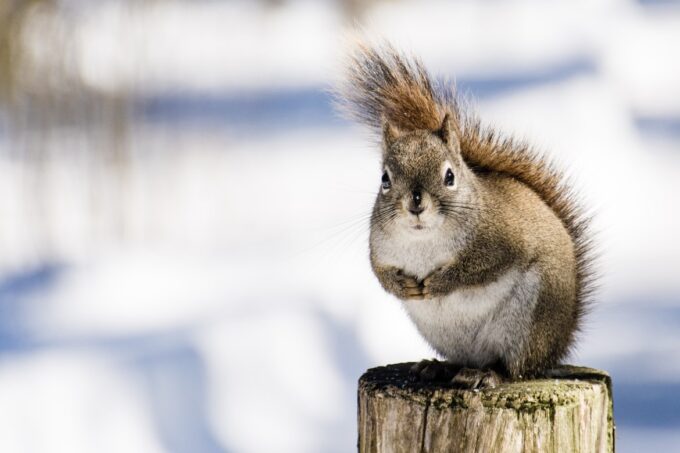
Source: unsplash.com
Squirrels aren’t as active when it’s cold outside, so you’ll have to time your hunt to the animal’s behavior. In the early mornings, when it’s still freezing, squirrels tend to remain in their nests. The best time to hunt squirrels is between mid-morning and early afternoon, as the temperature begins to rise. Wait until the squirrel exposes itself to aim your weapon, and don’t take the shot until it leaves its nest if you want any hope of retrieving the animal.
4. Coyotes
You may be able to hunt coyotes all year round, depending on where you live. Winter is considered the prime time to hunt this species for many people because the animal’s fur is at its thickest. This is an appealing aspect of the winter hunting season for those interested in harvesting the pelt for sale or home décor. During the winter, food sources also become more limited for coyotes, forcing them to become more active during daylight hours. This makes it easier for you to locate your prey and make the kill.
5. Feral Pigs
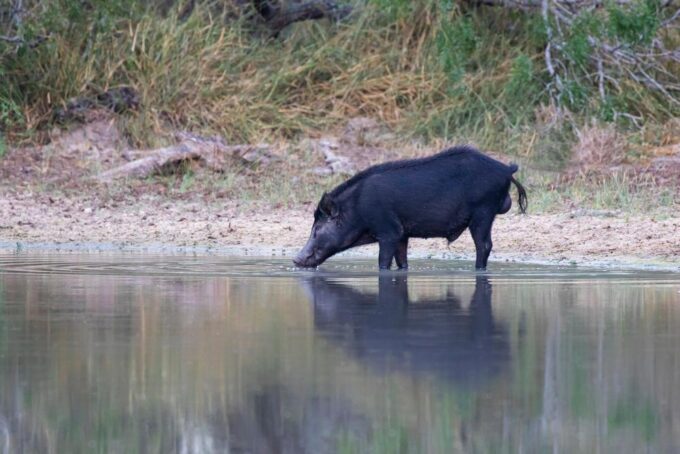
Source: shutterstock.com
Feral pigs are a nuisance in the U.S., posing a threat to humans, livestock, and crops. As one of America’s most destructive invasive species, state wildlife agencies have declared open season on them. In Texas, for example, as long as you have the consent of a private landowner, you don’t need a license to shoot feral hogs.
There are several ways you can track feral pigs. These animals use their snouts to root through the ground in search of food, leaving telltale signs. You can also search for hoof prints, which are distinct from deer tracks. One of the most effective ways of inducing a feral pig to expose itself is to use a predator call because hogs are aggressive and have a tendency to respond. Hunting feral pigs in the winter are advantageous because they’re constantly moving in search of food. As feral pigs are opportunistic, they’ll settle for almost anything they can eat, so take that into account.
6. Wild Turkeys
Although spring is prime turkey hunting season, winter causes wild turkey flocks to congregate around scarce food sources, making bagging a bird easy pickings. Check out picked-over fields, hardwood mast along creek beds, and cow lots (turkeys often pick at cow manure to supplement their winter diet.)
Decoys are less effective for turkey hunting in the winter once the mating season is over. However, you can still benefit from using turkey calls to attract lone jakes or toms. Depending on the legal status of hunting blinds in your state, you can consider using a ground blind to conceal your position when turkey hunting in the winter. A mirrored blind is a great option because it requires no brushing in, which can be challenging in winter with very little foliage available on the snow-covered ground.
7. Ducks and Geese
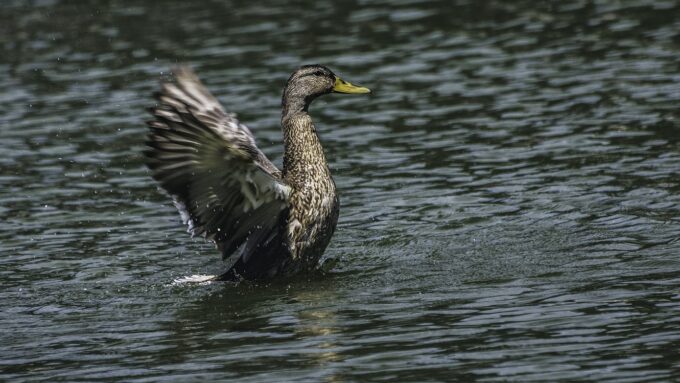
Source: unsplash.com
While many species of ducks and geese fly south as temperatures drop, mallards tend to stay longer, as they’re more resilient to the cold. When bodies of water freeze over, this causes waterfowl to congregate in the open waters that remain, at least until food supplies run out.
This allows the waterfowl hunter to bag several birds.
8. Upland Birds
Waterfowl aren’t the only birds that you can hunt in the winter. Other than turkeys, you can also pursue pheasants and grouse in January. Grouse are small birds that need to conserve energy during the colder parts of the year, so they’re not as mobile in the winter. They will typically seek overhead cover, sunlight, and food when temperatures peak in the mid-afternoon. These are the times to be looking.
Prepare Yourself and Your Equipment
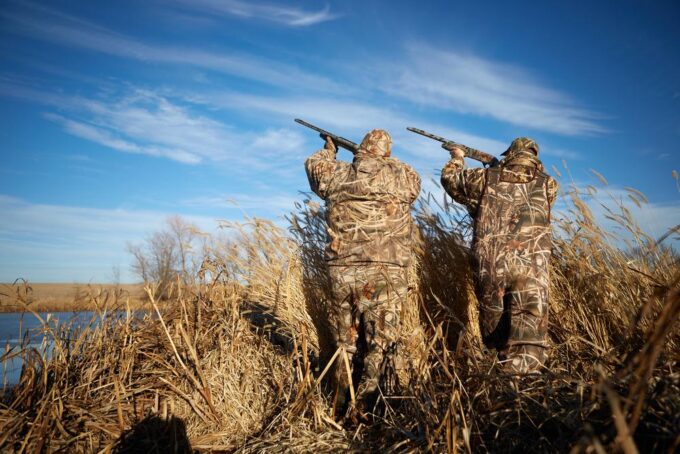
Source: shutterstock.com
When you’re hunting at temperatures of 32° F and below, you need to take special precautions against the weather. You should dress in warm clothing that keeps you dry, especially in the snow. Bring adequate food and water because cold weather worsens hunger and causes you to burn more calories. You should also pack a first-aid kit and know how to start a fire.
Always consult your state’s game laws prior to setting out on a hunting trip. You can’t assume that your preferred decoy, hunting blind, caliber, bullet type, broadhead arrow or draw weight is compliant without checking first. Regardless of whether your state requires you to wear a blaze orange vest, hat, or both, it’s a good idea to make yourself visible to your fellow hunters. Taking proper precautions ensures a rewarding and enjoyable winter hunt.


